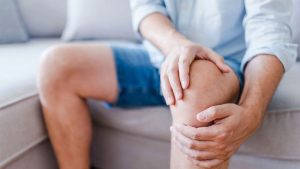Today in my lecture series, I’m going to talk about bones… you know, those creaky things that get you up and walking in the morning.
As we get older, our bones, unfortunately, grow older with us. But it’s not like those wrinkles in the mirror that we can easily see; this is something we feel, and oh boy, I can tell you it doesn’t feel good!
Some of us may be unfortunate enough to develop a condition called osteoporosis, in which bones become porous and more fragile, leaving us open to fractures and other problems. There are some medications for this, including the relatively new kid on the block, Boniva.
Part of the bisphosphonates drug class, Boniva was made for osteoporosis treatment and is similar to other drugs for the same condition, such as Actonel and Fosamax. Those drugs had to be taken every day or once a week, but Boniva only has to be taken once a month. All three of these medications work by stopping or slowing down the activity of the cells that are breaking down the bones, known as osteoclasts. Your bones are constantly being built up and torn down your whole life, but once you pass 30, you’re losing more than you gain and your bones become less dense over time. In women, this process can get worse after menopause, leading to osteoporosis.
Boniva’s side effects are similar to those of Actonel and Fosamax and include joint and muscle pain, headache and gastrointestinal problems, according to the Mayo Clinic (https://www.mayoclinic.org/drugs-supplements/ibandronate-oral-route/side-effects/drg-20068079). Some people taking this class of drugs have also experienced degeneration of the jawbone, but this is a newly discovered possible side effect and we don’t yet know how common it is.
Keep in mind that medicine isn’t your only route for getting your bones into better shape. If you smoke, it’s time to quit. The National Institute of Arthritis and Musculoskeletal and Skin Diseases says smoking increases your risk of bone issues (https://www.bones.nih.gov/health-info/bone/osteoporosis/conditions-behaviors/bone-smoking). Strength training and weight-bearing exercises can help you keep your bone mass, and you can also take 500 to 700 mg of calcium citrate and 2,000 IU of Vitamin D daily to help promote your absorption of calcium; be sure to speak to your doctor before taking any new supplements. Reduce your soda consumption, caffeine and excessive protein in your diet; all of these can make calcium loss worse.
You can’t turn back the hands of time on your bones, but you can take steps to minimize its effects!




